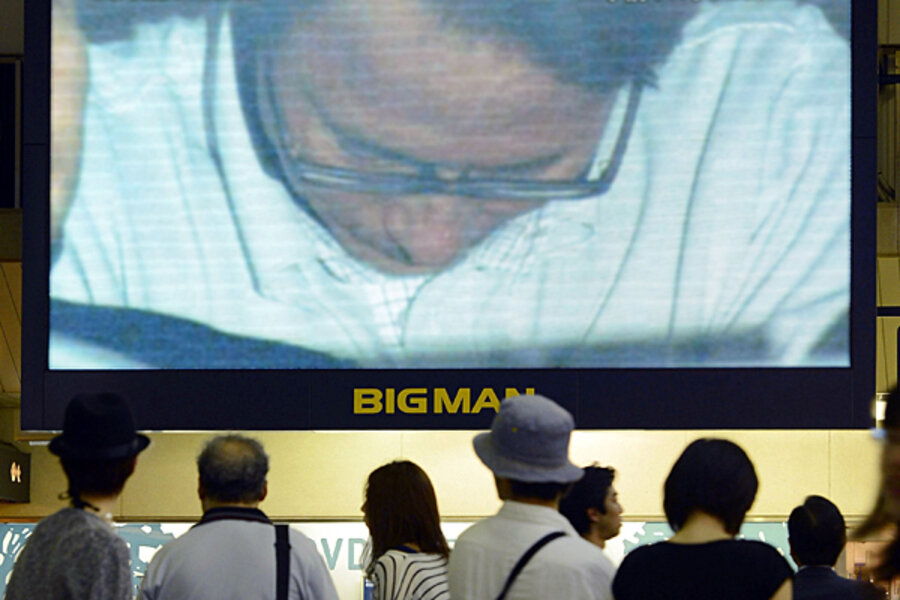Japan catches final fugitive in 1995 nerve gas attack
Loading...
Japanese police ended a 17-year-long manhunt today with the arrest of the final suspect in a gas attack on the Tokyo subway system. The arrest closes a chapter on one of the worst acts of domestic terrorism in Japan’s history.
In 1995, members of the Aum Shinrikyo doomsday cult killed 13 people and injured as many as 6,000 others when they released sarin nerve gas into the subway system during rush hour. The group’s founder and 12 followers are awaiting death sentences for their participation in the attack. Another 200 members have been convicted on charges related to the attack.
On Friday, police caught the remaining fugitive, Katsuya Takahashi, at a cafe in Tokyo after an employee tipped them off.
"The case has never been fully resolved," said Masaki Kito, a lawyer and Aum Shinrikyo watcher, according to the Associated Press. "He was a last piece of a jigsaw puzzle."
Police received a major breakthrough in the case about five months ago, after fellow cult member Makoto Hirata turned himself in for his involvement in the attack, giving new life to a case that had gone cold, reports The New York Times.
Mr. Takahashi is accused of delivering a fellow member of the group to the train station on March 20, 1995. That member then boarded a train and released the sarin gas, reports the Asahi Shimbun. Followers of Aum Shinrikyo believed the attack would trigger an apocalyptic battle with the government.
Japan’s Mainichi newspaper reports that Takahashi’s arrest represents a significant moment, as his testimony may provide new insights into the attack.
Takahashi has reportedly already confessed to authorities about his involvement.
"I did it under the instructions of high-ranking cult members," he told police, according to Mainichi.
Prior to his arrest, Takahashi had been using a fake name and working in construction south of Toyko, reports the Japan Times. About two weeks ago, authorities arrested Naoko Kikuchi, another suspect in the attack, and Takahashi went missing after it was reported in the news.
Police say Ms. Kikuchi told authorities that Takahashi had managed to elude arrest for so long by avoiding air travel and trains, as well as by mixing in with people in large cities.
“I don't want to take any chances of being caught. We should mix in with urban crowds, rather than living in a rural area," Takahashi told Kikuchi, according to police in an article by The Yomiuri Shimbun. “But we should avoid Tokyo, as there are too many police officers and security cameras.”
Japanese police say Kikuchi’s arrest also played a crucial role leading to Takahashi’s arrest. He had already fled when police raided the room where he lived while working in construction, but a search of his living quarters yielded a recent photo, reports the BBC. The photo, along with images from a bank surveillance video, was released to the public last week. A citizen recognized Takahashi and tipped off police.
Following the 1995 attack, the government revoked Aum Shinrikyo’s status as an officially recognized religion. On the eve of the attack, the cult had about 20,000 to 40,000 followers and about $1.5 billion in assets, reports Wired magazine. The group still exists today on a much smaller scale and is currently known as Aleph.







